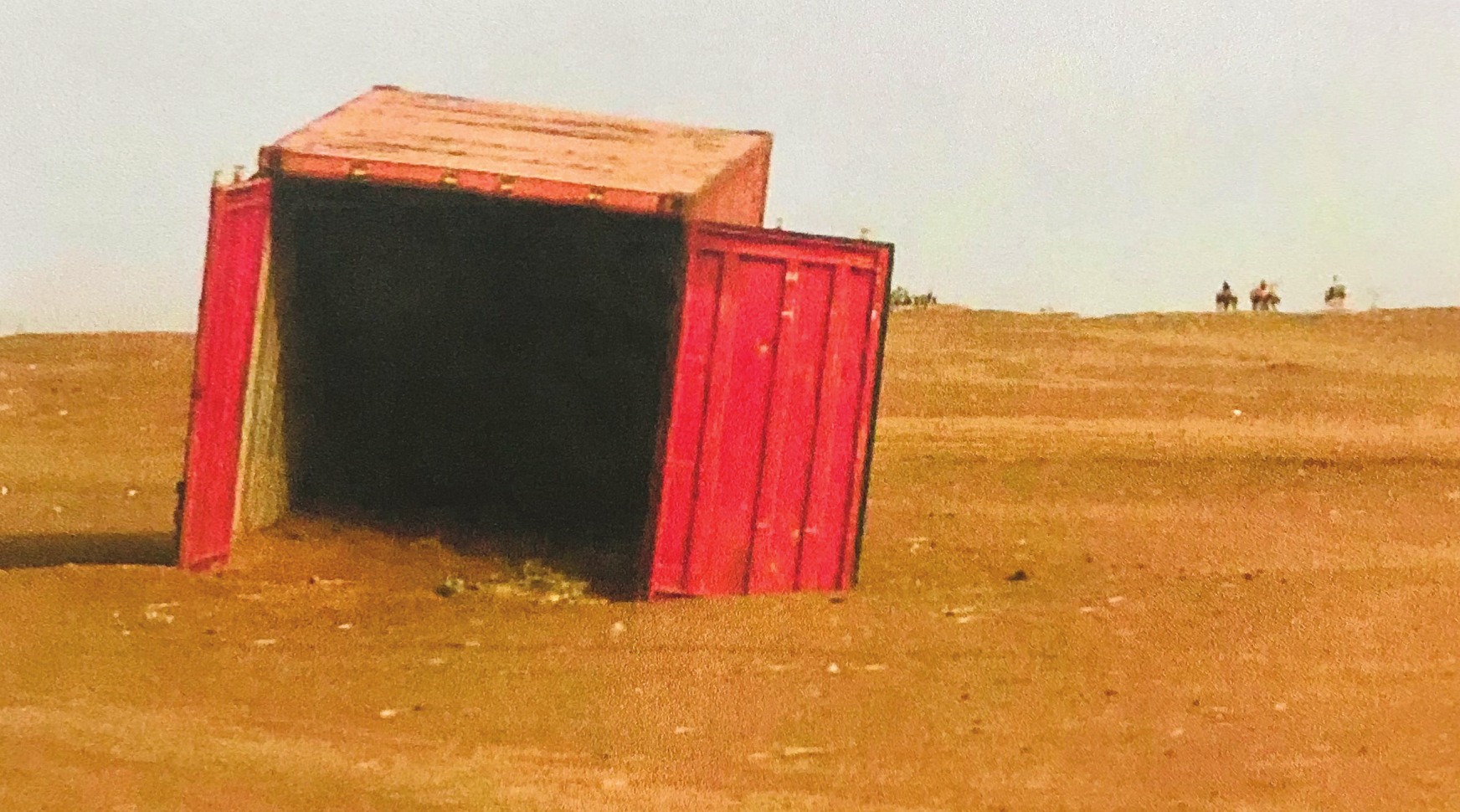There were at least 200.000 refugees enslaved and trafficked in Libya between 2017 and 2021, according to researchers. The policy of the European Union fuels this situation.
Refugees, particularly Eritreans, landing in Libya face a grim reality of trafficking, enslavement, and widespread abuse, including sexual violence, often to extort ransom payments from their families. Those who manage to escape from detention centers and reach the Mediterranean face the risk of interception and forced return to Libya or death at sea. These conclusions are drawn from research published in a book published on January, titled “ENSLAVED. Trapped and Trafficked in Digital Black Holes: Human Trafficking Trajectories to Libya”.
Human traffickers exploit digital technology by using methods such as electronic tagging to transport refugees through areas with limited internet access, known as “digital voids.” The traffickers have control over the internet access of refugees, particularly those fleeing Eritrea, which is known for its dictatorship.
This book posits that unequal access to digital technology and connectivity perpetuates the slave trade. Policies of the European Union, Libya, and other Horn of Africa nations have facilitated this exploitation, trapping Eritreans in a vicious cycle of human trafficking with limited to no means of escape. The authors arrived at these conclusions through clandestine communications with refugees who managed to send secret recordings or communicate through social media. Interviews were conducted with refugees who escaped to neighboring countries such as Niger, Sudan, Tunisia, and Europe.
Many refugees, including men, women, and children, die during their journey. During the period of the study (2017-2021), an estimated 200,000 refugees fell victim to human trafficking for extortion in Libya, with a total turnover of around one billion dollars. The researchers argue in the publication that the unequal access to and control of digital and connectivity technologies has enabled human trafficking and reduced hundreds of thousands of individuals to slavery.
Libya was already known to be the home of a twenty-first century slave trade. As the fourth largest country on the African continent and with more than 90 percent made up of desert, Libya has a lot of space for illicit business to flourish. Human smuggling and trafficking have long been rife. In May 2017, months after Kaleb arrived there, the chief prosecutor at the International Criminal Court, Fatou Bensouda, called Libya “a marketplace for the trafficking of human beings.” She told the UN Security Council that her office was collecting information about crimes against migrants and refugees there and was considering launching an official investigation to see who could be held accountable. Later that year, CNN International released a report that shocked global audiences. Its journalists went undercover to film migrants being auctioned as slaves in Libya for as little as $400 each. “This is a digger, a big strong man,” a slave trader announced as part of his filmed sales pitch. The UN Security Council held a special emergency session in the aftermath and an African Union-EU task force was formed, but little came out of it.
Hayden’s book, “The Fourth Time We Drowned: Seeking Refuge on the Most Deadliest Migration Route” (2022), portrays the human trafficking cycle as a “revolving door” in which refugees are bought and sold repeatedly and subjected to pushbacks that keep them in an indefinite state of detention and dislocation. The author describes the toxic situation of human trafficking for ransom in Libya and neighboring countries as worsened by the policies of the European Union.
Different nationalities were charged varying amounts of money by smugglers. Somalis and Eritreans paid thousands of pounds, and sometimes even tens of thousands. They were followed by Ethiopians and Asians, particularly Bangladeshis, while West Africans and Sudanese people paid less—maybe as low as $300. “Many traffickers look at Eritreans, Ethiopians, and Somalis with a dollar sign on them,” said Mark Micallef, a Malta-based researcher who spent years studying smuggling routes. Those countries have large, well-connected diasporas made of people who, by the virtue of already living abroad, are more easily able to access and raise money, he noted.
It can also come down to luck. A Sudanese man in Libya told me that everyone who traveled with him paid at least $3,000, in various installments, but a Somali woman he knew paid a whopping $60,000. Prices were usually higher for girls or women because of family concerns about their safety and honor. Some smugglers gave the option to partially pay their ransom with sex.
Once the money was collected, it was transferred to a bank account in Dubai, or to Khartoum or Istanbul through the hawala system, an alternative financial exchange channel that exists outside normal banking and is difficult to trace. Some former captives even told me there were posters with the details for different bank accounts stuck to the walls around them in the area where they went to call their relatives.

It was back to the drawing board for the EU, and the next option was to stop the boats. The international law principle of non-refoulement prohibits sending a person back to a country where their life is in danger and they could be tortured or persecuted. In 2012, the European Court of Human Rights ruled that refugees could not be returned to Libya by European boats because of the huge risk to their lives there. The EU found a way around that by equipping, training, and supporting the Libyan coastguard to do interceptions themselves.
As an entity, the Libyan coastguard was much looser than it sounded, even once it recruited more people who could sail. Different militias were involved at various points along the coast. Smuggling was a lucrative business, and in the years following the revolution, many of the coastguard’s members had been actively involved in it themselves. A number still were. “Those Libyan coastguards are wicked, they’re violating the rights of migrants and refugees,” a South Sudanese man who spent sixteen months in a government-associated detention center complained. “The EU know[s] that Libya is the largest human market in the world, and they’re still paying the Libyan coastguard to bring back migrants.”
“The Libyan coastguard just work for money. Let’s say the EU stops funding the coastguards, then the coastguards would work for the smugglers…There are some boats that make it to Italy. Do you think the coastguards don’t see the boats? The smugglers and the Libyan coastguard were co-workers before. Sometimes the smugglers give them a higher percentage of money, then they let them pass through. This is business, Sally. Money. The coastguards are working with Italy now because they are giving more and more money.”
The pushbacks of migrants and refugees in the Mediterranean Sea is a growing concern that has attracted international attention. According to the United Nations High Commissioner for Refugees (UNHCR), the number of refugees and migrants reaching Europe by sea declined dramatically in 2020, largely due to the COVID-19 pandemic, but also due to increased pushbacks by EU member states and the Libyan coast guard. This trend has continued with numerous reports of pushbacks and human rights abuses against migrants and refugees in the region.
Pushbacks violate the principle of non-refoulement, which is considered a cornerstone of international refugee law. Non-refoulement prohibits states from returning refugees and migrants to countries where they are at risk of persecution, torture, or other serious human rights violations. Pushbacks also violate the right to seek asylum and the right to life, as well as other fundamental human rights protected by international law.
Pushbacks have devastating consequences for the people involved, who are often already vulnerable and in need of protection. Migrants and refugees are exposed to violence, abuse, and exploitation at the hands of smugglers and traffickers, who often exploit their desperation to reach safety. They are also at risk of drowning in the dangerous waters of the Mediterranean, which has become one of the deadliest migration routes in the world.
The EU’s approach to migration and asylum has been criticized for being insufficient and inconsistent. The EU has failed to adopt a comprehensive and harmonized approach to migration and asylum, which has led to a fragmented and ineffective response to the crisis. This has created an environment in which pushbacks are more likely to occur and human rights violations are more likely to be committed.
The EU’s policies have also had a negative impact on the countries of origin and transit of migrants and refugees, who are often left to bear the burden of this crisis. The EU has outsourced its responsibilities to third countries, such as Turkey, Morocco, and Libya, by providing financial support and other forms of assistance to these countries in exchange for their cooperation in controlling migration flows. This has resulted in the EU effectively externalizing its borders, leaving refugees and migrants trapped in countries where they are at risk of abuse, exploitation, and human rights violations.
Given the critical nature of the issue and the scarcity of academic examination, an in-depth examination of human trafficking for ransom in Libya is urgently needed. The aim of this book is to provide such an analysis and explain why this devastating situation has persisted. The research is based on ground-level observations, and takes an emic perspective by incorporating the perspectives of refugees, migrants, and other stakeholders with direct involvement and knowledge of the situation. Building on previous studies that have tracked Eritrean victims of human trafficking for ransom, this study draws on available knowledge to provide a comprehensive description of the phenomenon.
Migration: The European Union’s perennial conundrum










